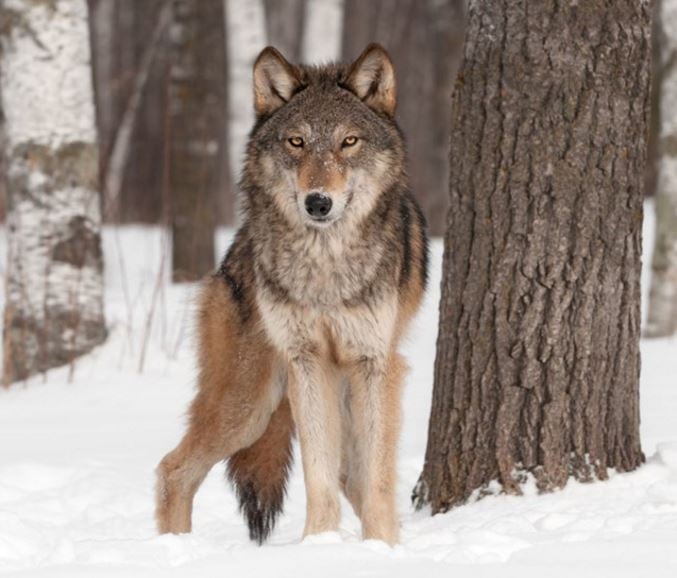By BUCKRAIL

JACKSON, Wyo. -
The Dell Creek Wolf Pack started killing livestock
in late January between Pinedale and Hoback, so the U.S. Fish and
Wildlife Service took action.
Buckrail reports the federal agency has been monitoring this particular pack for years, but they don't typically cause problems, according to the Northern Rocky Mountain Wolf Coordinator Mike Jimenez.
"The pack lives in an area where there are tons of elk because of state-managed feedgrounds, so there is no shortage of prey and for whatever reason, the pack began killing last year's calves on private land," he said.
The pack, which was about 16 wolves, started to take down calves 500 to 600 pounds in size. As a result, the agency killed two wolves at the end of February and three more a few weeks later, bringing the pack size down to 11.
"We have been doing this for the last 25 years and have published papers and quite a bit of research on it," said Jimenez. "What we find is that one of the issues is that for wolves that are constantly exposed to livestock, larger packs can be really problematic."
"What has worked well is to reduce pack size. A pack of 16 wolves causes way more problems than a pack of 10 wolves," he added.
The bodies of the killed wolves were donated to various organizations for research.
"The population is alive and healthy, it is robust," said Jimenez. "Wolves are continually expanding, so that part has been achieved and we just try to minimize these conflicts."
Feature Photo: Photo by Holly Kuchera / shutterstock / Pitchengine Communities
source
Buckrail reports the federal agency has been monitoring this particular pack for years, but they don't typically cause problems, according to the Northern Rocky Mountain Wolf Coordinator Mike Jimenez.
"The pack lives in an area where there are tons of elk because of state-managed feedgrounds, so there is no shortage of prey and for whatever reason, the pack began killing last year's calves on private land," he said.
The pack, which was about 16 wolves, started to take down calves 500 to 600 pounds in size. As a result, the agency killed two wolves at the end of February and three more a few weeks later, bringing the pack size down to 11.
"We have been doing this for the last 25 years and have published papers and quite a bit of research on it," said Jimenez. "What we find is that one of the issues is that for wolves that are constantly exposed to livestock, larger packs can be really problematic."
"What has worked well is to reduce pack size. A pack of 16 wolves causes way more problems than a pack of 10 wolves," he added.
The bodies of the killed wolves were donated to various organizations for research.
"The population is alive and healthy, it is robust," said Jimenez. "Wolves are continually expanding, so that part has been achieved and we just try to minimize these conflicts."
Feature Photo: Photo by Holly Kuchera / shutterstock / Pitchengine Communities
source


No comments:
Post a Comment